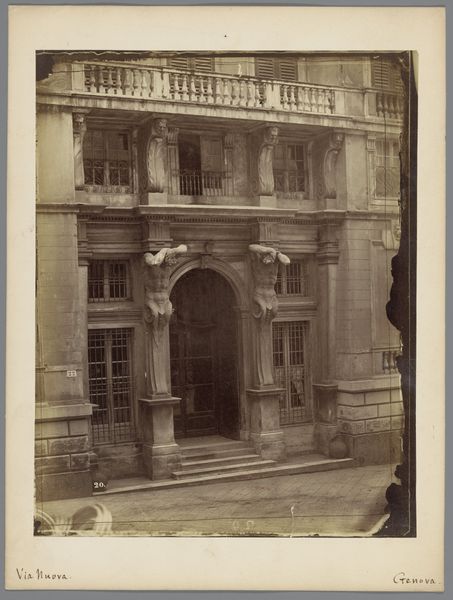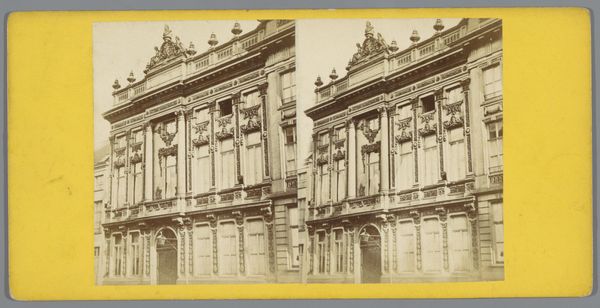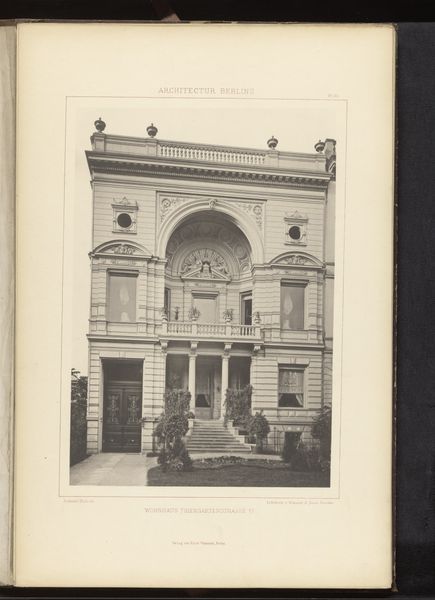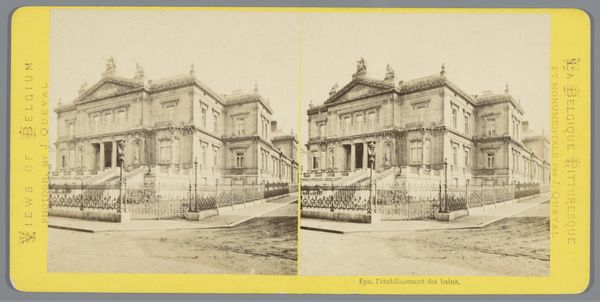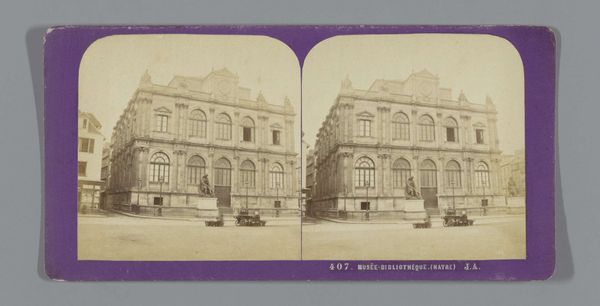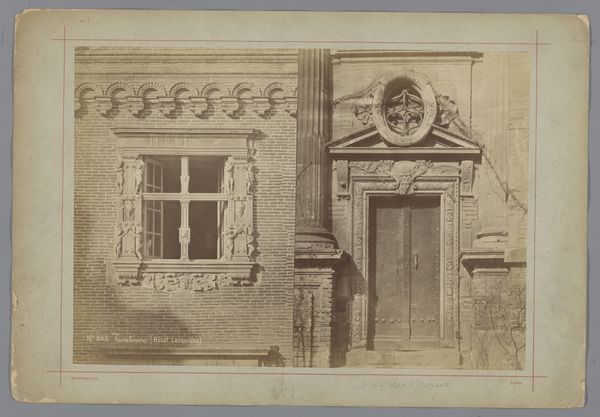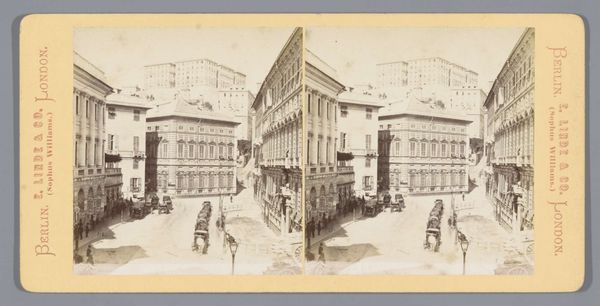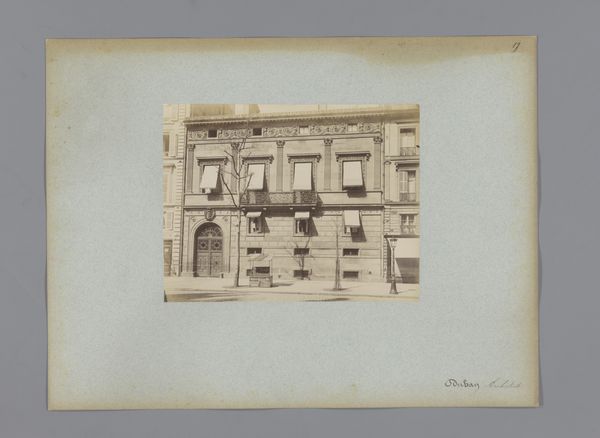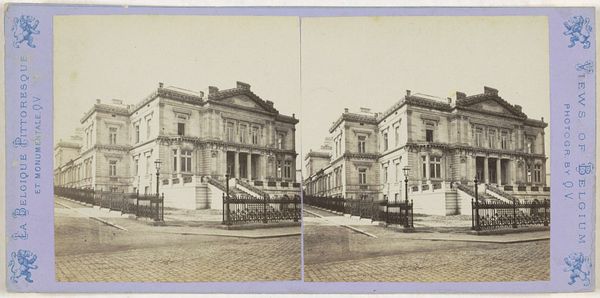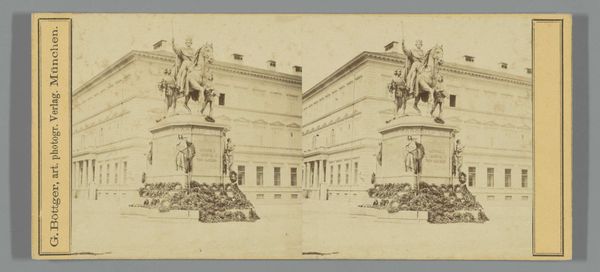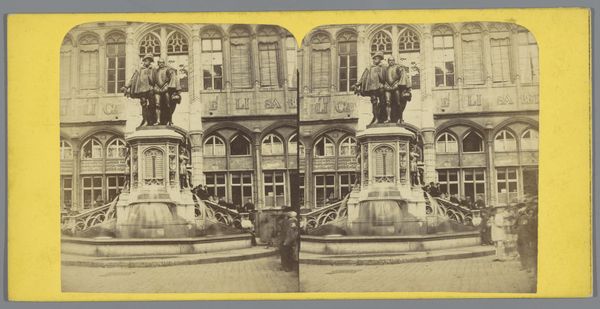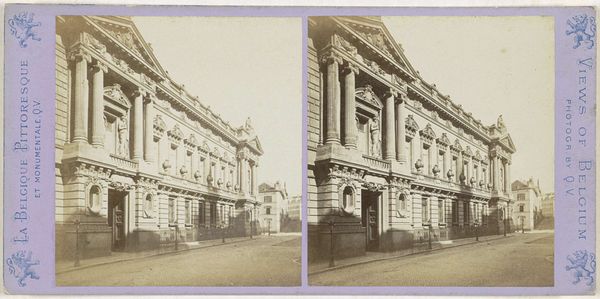
Gezicht op een standbeeld van Georges Mouton in de Rue de Lobau in Parijs c. 1850 - 1880
0:00
0:00
Dimensions: height 85 mm, width 176 mm
Copyright: Rijks Museum: Open Domain
Curator: Let's consider this intriguing gelatin silver print titled "Gezicht op een standbeeld van Georges Mouton in de Rue de Lobau in Parijs," believed to be from sometime between 1850 and 1880 by an anonymous artist. Editor: Stark, really. That stern statue looms so centrally. The high contrast in light and shadow does a fine job of emphasizing its imposing form and neo-classical style set against that rigidly symmetrical building behind. Curator: The creation of such a photograph, reproduced through the gelatin silver process, speaks volumes about the era. Think of the advancements in photographic technology during this period and the accessibility this newfound process offered for wider reproduction and distribution of images depicting Parisian landmarks. This process really democratized image making. Editor: True. And the formal arrangement is so carefully balanced. The way the architecture frames the statue, the placement of the light... it directs our gaze to Mouton himself. Do you think the photographer aimed for something like apotheosis? Curator: Well, photographing statues of notable people was extremely popular at the time, and contributed to cultivating patriotism. It made the symbolism accessible and easily distributed. What I find interesting is the tension between high art—the sculpted statue as a representation of power—and the photographic reproduction as a form of mass media and consumption. It blurs the line, really, doesn’t it? Editor: Precisely! This photograph does more than document a monument, though. See how it interacts with the architecture—that rhythmic play of light and shadow across the facade creates a beautiful visual echo. Curator: This photographic method really makes mass cultural appreciation much more possible for the wider French public and beyond at this moment in time. Editor: I do love the rigid structures of the composition. This photographic artwork invites an aesthetic consideration of form, balance, and representation that, together, make a fine artistic argument.
Comments
No comments
Be the first to comment and join the conversation on the ultimate creative platform.
